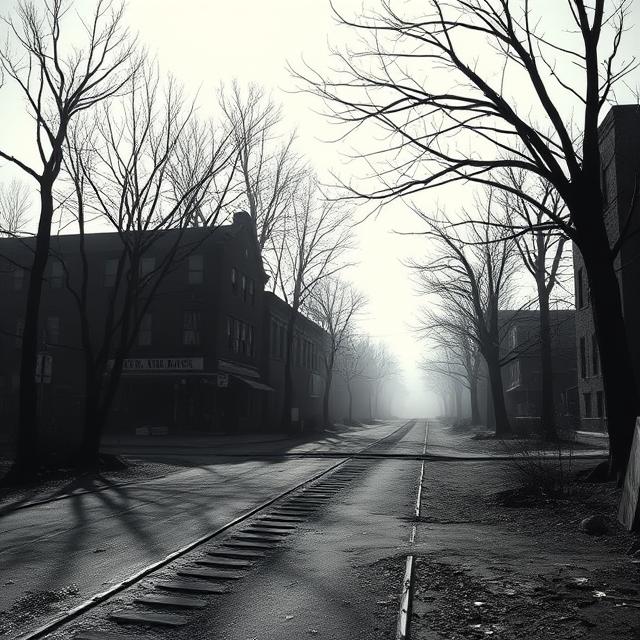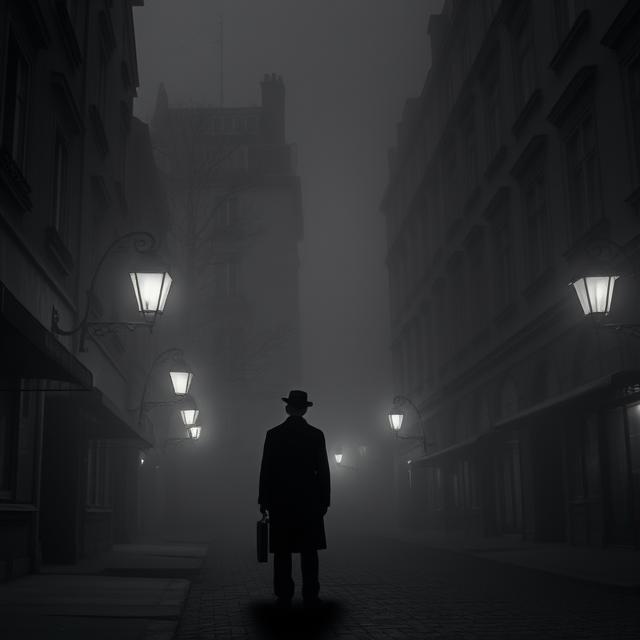The Great Depression cast a long and bleak shadow over the United States, and the city of Cleveland, Ohio, was no exception. Amidst the economic hardship and social unrest, a far more sinister darkness began to emerge in the mid-1930s. A serial killer, known only as the Cleveland Torso Murderer or the Mad Butcher of Kingsbury Run, preyed upon the city’s most vulnerable, leaving behind a trail of grotesquely dismembered bodies that shocked and terrified the nation. Despite an intense investigation that involved a legendary lawman, Eliot Ness, the identity of this brutal killer remains one of the most enduring and unsettling mysteries in American true crime history.
The killings began in September 1935 with the discovery of the headless and castrated remains of two unidentified individuals, a man and a woman, in the Kingsbury Run area, a sprawling and impoverished shantytown along the Cuyahoga River. This desolate location, a haven for transients and the marginalized, would become the dumping ground for many of the killer’s victims.
Over the next three years, a pattern of horrifying discoveries unfolded. More bodies, or parts thereof, were found, often meticulously dismembered, with the heads and sometimes other extremities removed. The victims were typically vagrants, prostitutes, or other individuals living on the fringes of society, making identification difficult and perhaps contributing to the initial lack of widespread panic beyond the affected communities.
The known victims of the Cleveland Torso Murderer are:
- Edward Andrassy, found September 23, 1935
- Florence Polillo, found September 23, 1935
- Unidentified Male #1, found January 26, 1936
- Unidentified Male #2, found June 6, 1936
- Unidentified Female #1, found July 22, 1936
- Rose Wallace, found June 19, 1937
- Unidentified Female #2, found April 8, 1938
- Unidentified Male #3, found April 8, 1938
- Unidentified Male #4, found August 16, 1938
- Unidentified Female #3, found August 16, 1938
- Unidentified Male #5, found March 2, 1939
- Unidentified Male #6, found June 10, 1940
It is widely believed that there were likely more victims whose remains were never discovered or identified. The killer operated with a chilling level of anatomical knowledge, dismembering the bodies with surgical precision. The removal of the heads and the lack of fingerprints further hampered identification efforts.
As the body count rose, so did public fear and pressure on law enforcement to catch the “Mad Butcher.” The investigation was initially disorganized and hampered by the victims’ transient lifestyles. However, the arrival of Eliot Ness, the famed former Prohibition agent who had become Cleveland’s Safety Director, brought a new level of intensity to the search.
Ness, known for his efforts to take down Al Capone, became deeply involved in the Torso Murder investigation. He believed the killer was operating within the Kingsbury Run area and ordered the shantytowns there to be razed in an attempt to flush out the suspect. This controversial move, while intended to disrupt the killer’s environment, also displaced many already impoverished individuals and ultimately did not lead to an arrest.
Several suspects were considered over the course of the investigation:
- Frank Dolezal: A local man with a criminal record and a history of violence, Dolezal confessed to one of the murders (Florence Polillo) but later recanted. Despite circumstantial evidence and his confession, he was never definitively linked to all the killings, and many investigators doubted his sole involvement. He died in custody before the investigation concluded.
- Dr. Francis E. Sweeney: A physician with surgical skills and a history of mental instability, Sweeney became a prime suspect for Eliot Ness. Sweeney had a family connection to law enforcement and had been institutionalized for psychiatric issues. Ness believed Sweeney’s medical knowledge aligned with the precise dismemberment of the victims. Sweeney was relentlessly pursued by Ness but was never definitively proven to be the killer. He taunted Ness with postcards and letters after leaving Cleveland.
- Other transient individuals: Given that many of the victims were from the transient community, investigators also considered the possibility that the killer was another transient who moved through the area. However, this theory was difficult to substantiate.
Despite Ness’s efforts and the extensive investigation, the Cleveland Torso Murderer was never apprehended. The killings abruptly stopped in 1938, only to have one final suspected victim appear in 1940. The reason for the cessation of the murders remains unknown, leaving another layer of mystery to this chilling case.
The legacy of the Cleveland Torso Murderer is one of enduring fear and frustration. The gruesome nature of the crimes and the fact that the killer was never brought to justice have cemented this case as a dark chapter in Cleveland’s history. The victims, often forgotten due to their marginalized status, represent a tragic loss of life and a stark reminder of the societal vulnerabilities that can be exploited by predators.
The “Mad Butcher of Kingsbury Run” remains a phantom in the annals of true crime, a brutal and efficient killer who vanished as mysteriously as he appeared. The lack of closure continues to haunt investigators, historians, and the people of Cleveland, a chilling testament to the darkness that can lurk in the shadows of even the most ordinary of cities. The desolate landscape of Kingsbury Run, once a dumping ground for both the forgotten and the dismembered, still whispers the secrets of a killer who evaded justice, leaving behind only a legacy of horror and unanswered questions.
Want to explore the shadows even deeper? For more chilling cases like this, visit SinisterArchive.com, where the legends are real.




